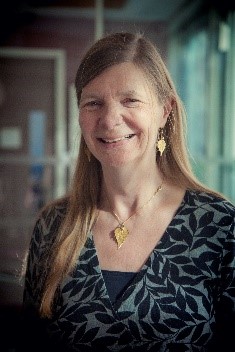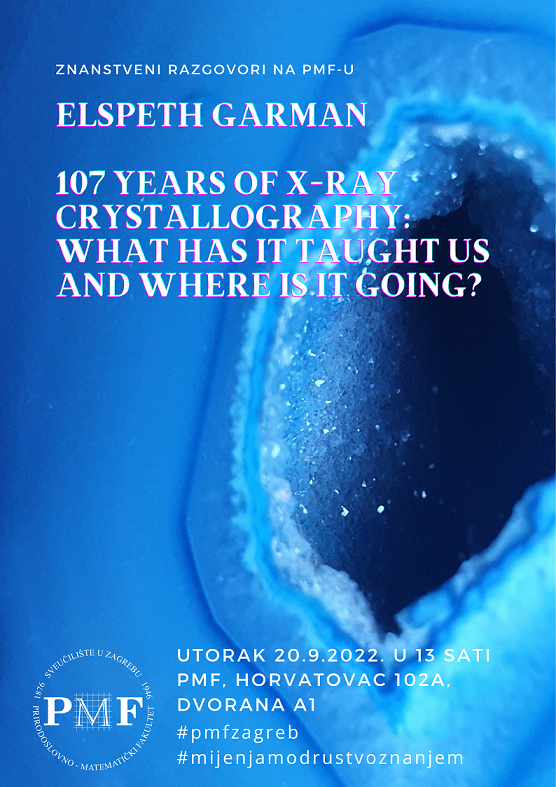What has the art of the chocolatier got to do with drug discovery, proteins and DNA? The linking theme is crystals, which allow us to determine the three-dimensional shapes of all sizes of molecules, ranging from the tiny chocolate moiety to the much larger proteins that allow our bodies to function through to the DNA that carries our genetic information. Crystallography was born in 1913 with the determination of the 3-D structure of sodium chloride (salt) by the Bragg father and son team. It has flowered to elucidate many disciplines since then, with applications in engineering, physics, chemistry, earth sciences and biology. Using crystallography, we can unravel the shapes of biomolecules in our bodies that are targets for drugs against disease, and thus identify new treatments. I will focus on this last field, and give an overview of what is currently achievable and what may be possible in the future (my crystal ball permitting!).
Elspeth Garman is a Professor of Molecular Biophysics at Oxford University. She started her working life aged 18 as a volunteer teacher in Swaziland, Southern Africa. Following a degree in Physics at Durham University, UK, she research for a D.Phil (PhD) in Experimental Nuclear Structure Physics at Oxford. After 7 years as a Nuclear Physics Research Officer and Physics Tutor, she changed fields to protein crystallography. Her main research interest is in improving methods for structural biology, particularly in unambiguously identifying metals in proteins using particle induced X-ray emission (PIXE), optimising crystal cryocooling and understanding radiation damage effects during X-ray diffraction experiments as well as finding methods to mitigate them. Her group has written and released the RADDOSE-3D, RABDAM (part of the CCP4 suite) and RIDL software programs. She is author on over 180 peer reviewed publications. She was President of the British Crystallographic Association 2009-2012 and Director of the Life Sciences Interface and then Systems Biology EPSRC Doctoral Training Centres at Oxford from 2009-2014. In 2016 she was awarded the American Crystallographic Association’s Fankuchen Prize, was the inaugural winner of the British Biophysical Society’s Sosei Heptares Prize in 2018, and recipient of the European Crystallographic Association’s Max Perutz Prize in 2019. Over the last 30 years, Elspeth has very much enjoyed meeting many young researchers at conferences and while teaching on over 100 crystallography schools round the world.

